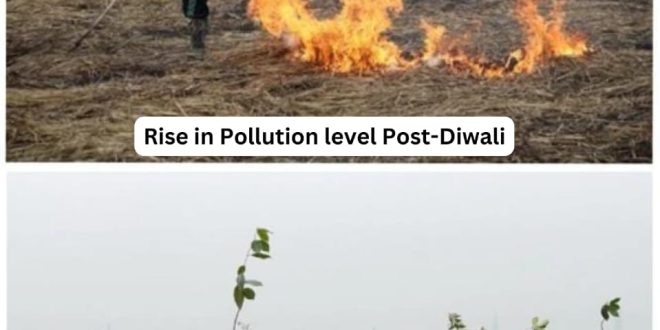With pollution levels rising in Delhi, Kolkata, and Mumbai, the relevance of urban plantation projects like ‘Trees for Delhi’ is gaining prominence
As Diwali lights fade from Indian skies, the growing environmental concern over rising pollution levels resurfaces. Each year, the festive spirit is overshadowed by deteriorating air quality as firecracker emissions add to the vehicular and industrial pollution choking urban cities. Even before Diwali celebrations began, Delhi’s air quality had deteriorated over several days, with most monitoring stations recording levels in the ‘very poor’ category on the Air Quality Index (AQI). This was primarily due to stubble burning in neighbouring states, vehicular pollution, firecracker use and unfavourable surface wind conditions. Data from the Central Pollution Control Board (CPCB) has indicated that Delhi’s 24-hour average AQI on (13-11-2023) was 301 which is exponentially high compared to normal AQI which ranges between 0-50. AQI value above 300 is considered to be hazardous to health. On November 4, the AQI exceeded 300, reaching a hazardous level 353.
Apart from debilitating air pollution, the city is also witnessing rising water pollution levels as thick froth laced with high levels of ammonia and phosphates, vitiates the Yamuna. The situation in two other major cities—Kolkata and Mumbai—has also deteriorated, placing them fourth and eighth, respectively, among the world’s top 10 most polluted cities.
According to the West Bengal Pollution Control Board (WBPCB), the AQI in most parts of Kolkata crossed 200 and was seen in the range of 230-290 in different regions of Kolkata, while in Mumbai, the overall AQI was around 230, as recorded after Diwali 2023.
Experts are raising concerns about the potential health hazards arising from these issues. They are emphasising the need to identify and eliminate local pollution sources. They also call for remedial measures in urban centres, especially to address the escalating levels of particulate matter (PM) in the air.
One of the most effective ways to improve air quality is by increasing green lung spaces in these cities through tree planting. Trees naturally purify the air by absorbing harmful pollutants, filtering PM, releasing clean oxygen, and significantly reducing smog levels.
“Cities like Delhi and Mumbai urgently require environmental interventions to bring down the alarming air pollution levels. Urban greenery is needed here to mitigate the urban heat island effect, absorb pollutants and improve air quality. Green lung spaces in concrete jungles play a critical part in sheltering biodiversity, filtering stormwater to reduce the kind of flooding that Delhi endured not too long ago, curbing greenhouse gas emissions and mitigating the impact of climate change, ” says Pradip Shah, co-founder of the social enterprise Grow-Trees.com, which is actively undertaking various afforestation initiatives across India.
Grow-Trees.com’s ‘Trees for Delhi’ project, has already planted over 1,80,000 trees in the capital and aims to plant a total of 2,05,000 trees. “The urban ecosystem of Delhi is defined by two major geographical features, the Yamuna River and the Delhi Ridge. It is essential to safeguard the ecological health of both. In 2025, in order to strengthen the city’s resilience to environmental challenges, we aim to plant over 25,000 trees in areas including Yudhister Setu, Signature Bridge and Usmanpur Village,” adds Mr Shah.
Previously, the plantation project was implemented in several locations, including Yudhister Bridge IT Park, Jheel Park, Smriti Van, Golden Jubilee Garden, CWG Village, Green Belt Yamuna, Art of Living area in Yamuna and Sanjay Lake in the Delhi-NCR region. Fruit-bearing and medicinal trees such as Neem, Shisham, Jamun, Sohajna, Peepal, Ashok, Pilkhan, Papri and Burma Dek are being planted as part of the project. Upon maturity, each tree can absorb approximately 20 kg of CO₂ per year, which is considered a conservative estimate for the sequestration potential of trees globally.
Rising pollution levels in cities like Kolkata contribute to climate change, affecting eco-sensitive areas such as the Sundarbans in West Bengal. Grow-Trees.com has hence launched the Trees for Tigers® initiative, aiming to plant 2,10,000 trees in the villages of Ranabelia, Randhanagar, Manmathanagar, Harispur and Ramnagar in the Gosaba Block of West Bengal. Meanwhile, the Trees for Tigers® project in Ramtek, Maharashtra, will plant over 5,36,023 trees to help mitigate climate impacts and reduce human-wildlife conflicts in the region.
 Matribhumi Samachar English
Matribhumi Samachar English



